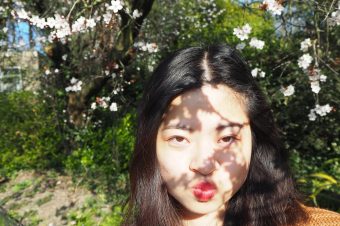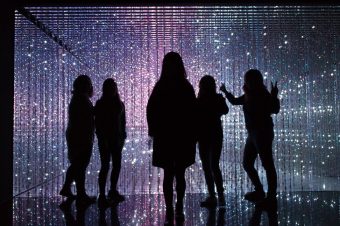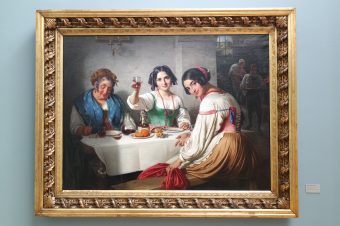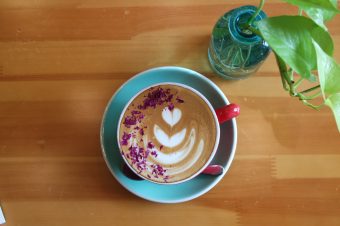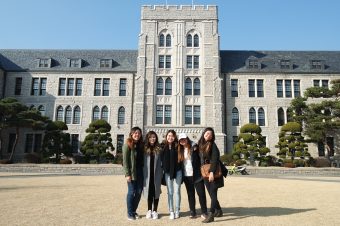Everyone in China always goes “Su-Hang, Su-Hang,” meaning Suzhou and Hangzhou and it’s become habit for people to visit these two Yangtze River or “Jiangnan” cities together. This time however, my sister and I opted to go from Hangzhou to Xitang, and finally to Shanghai. With the summer sun and humidity still in our minds, here’s a super casual seven-day guide of our trip.
Hangzhou
Day 1
We arrived in Hangzhou at noon and after dropping off our luggage at the hotel (tip: book one close to West Lake, which will make getting around easier), headed to Hu Xueyan’s Former Residence (胡雪岩故居). Hu Xueyan was an extremely successful and famous businessman during the late Qing Dynasty. This residence was built at the height of his career and today, it’s a beautiful example of local architectural style and Chinese gardens. Entrance fee is 20元and I think it’s worth a short trip.
After visting Hu Xueyan’s Former Residence, we headed over to Hefang Road (河坊街), but really, ended up on the nearby Nansong (South Song/南宋御街) road because we saw a Starbucks (university has trained me well) and needed some refreshments to combat the boiling heat. This Nansong road was used by the South Song emperor to travel to and from his palace. The street is a mix of Republican era and traditional architecture and touches. Heading further down towards the West Lake will lead you to the more famous Hefang Road but Nansong is just as, or perhaps even more, charming. Try out the silk stocking milk tea from Momi Café (猫的天空之城), which also has branches in Suzhou, Shanghai, and even Xitang. Check out the special postcards and souvenirs they have for each city!
After browsing through Hefang Road, we headed back to Nansong for dinner at Yu Le Tang (御乐堂). The restaurant is decorated in Song Dynasty aesthetics (think minimalistic) and serves up good quality local food. We ordered a Beggar’s Chicken (叫花鸡) as our main dish. Their tea (of course, in Hangzhou, you need to try the locally produced Longjing) was really good as well.
Day 2
The next day, we decided to ride bikes from our hotel near Leifeng Pagoda to the Broken Bridge. The bridge isn’t actually broken, just that the bridge looks as if it is in parts-especially in winter. The bridge is famous for being the place where two lovers reunite (really romantic) in a drama version of the Legend of the White Snake, a well-known Chinese story.
Since it was summer, we didn’t successfully ride all the way to the bridge because it got way too hot but I’m sure the autumn rides by the lake are wonderful. With sweaty backs and dripping hair-ends, we finally made it to the famed Broken Bridge. Though the weather was hot, we were rewarded with an endless sea of lotus flowers. After trudging to the other end of the bridge, we finally made it to the Xiling Imprinting museum. It’s a perfect place for all those calligraphy and carving junkies out there. It’s a quiet and small courtyard but a nice place to check out the long tradition of Chinese calligraphy and carving.
The day had gotten too hot, so we headed back down the lake towards the main shopping area where we grabbed some refreshing tea at 奈雪の茶. We waited until the sun started to set before heading back to the lake where we sat at the edge and enjoyed the cooling breeze as the day came to an end.
Day 3
On day 2, we had seen that there were lots of people at all the pagodas by the time it was 9AM so we decided to wake up super early to go to the Jixian Pavilion (集贤亭). We managed to get some nice photos without anybody in them and see the senior population of the city do their daily morning exercises.
After the brief photo op, we hailed a cab and headed to the China National Academy of Fine Arts (中國美術學院). The ride took about thirty minutes but with the new subway line being built, I’m sure getting to the school would be a lot easier in the future. Anna had taken a class on modern Chinese art during her last quarter at UCLA and learned about the school. Fascinated by its history (it was started in 1928), she did some online searching and saw that the new campus had lots of amazing architectural pieces. This simple reason was what spurred the entire trip to Hangzhou. The place did not disappoint—featuring a vast array of east-meets-west architectural styles and peaceful walkways and ponds, the school truly represents its identity as the place where traditional and modern China converge.
*Tip: In Asia, the south gate of a school campus is usually the one that is open to the public. Don’t be like us and end up at the north gate…and then having to walk around the whole campus to get to the other side.
*Tip: The “10 Sites of West Lake” were named during Emperor Qianlong’s reign and if you have more time, its a great way to get in all the scenery West Lake has to offer.
Xitang
Our next stop was Xitang, and so we headed to the Hangzhou East Railway Station for a high-speed train to Jiashan Station. From there, we took a bus (K222) to Xitang. Xitang is another one of the famed water towns in the Lower Yangtze region.
*Tip: Enter the scenic area in the early morning or after 5PM to avoid entrance ticket cost.
Since it was almost dinner time after we had checked into our little hotel, we decided to walk around and find a dinner spot. We ended up at Seven Tables Restaurant (七张桌精品餐馆), a little restaurant named after its original seven tables (now its expanding). The food was super good, the waiters really nice, and they even gave us free banana salad and shells!
Shanghai
Day 4
The next day, we woke up at 4:00am to watch the sunrise and catch some photos before all the tourists came in. Afterwards, we made our way to the Xitang bus station where we caught a bus to Shanghai. This ride takes a little more than an hour and is super convenient if you go to Shanghai South Station (上海南站) because you can then take subway line 1 or 2 into the city. This time in Shanghai, my sister and I booked an Airbnb in the FFC (former French concession) area. The neighborhood was quiet and peaceful-it felt like we were back home- and the house was one of those super fancy, old Western-styled homes so we really got to enjoy how it felt to live in the area back in the 1920s or 30s.
Since we were quite tired, we decided to just head to 박가 네 朴家 for a Korean bbq dinner before chilling for the night (and watch Yanxi Palace).
Day 5
On Day 5, we started our day at Sal and Pepe. After a super filling lunch, we rode the bus to the Rockbund Museum for Lin Tian Mao’s exhibit. They usually only have one exhibit going but I think the museum has bought down the rest of the road so it’s sure to expand.
After the museum, we headed down Sichuan Road towards the historical General Post Office Building (上海邮政总局大楼). Built in 1924, it was the center of international postal services for the Republic of China. Today, the building features a free postal museum and a chance to purchase some hard to find stamp collections.
Tired and sweating from walking along the Bund, we headed back a little inland to Nanjing Road (East), the famed shopping street of Shanghai. There, we grabbed a few fresh egg tarts from Lillian Bakery before strolling past the countless shops on the road. For dinner we headed to The Pine at the InterContinental Shanghai Ruijin. I recommend going for lunch or before sunset for some super picturesque hotel grounds! We went at night and could only take photos of the buildings.
Day 6
For brunch, we walked over to RAC Coffee on Anfu Road (just down the road from our place) where we ordered some super tasty savory crepes. Two guys next to us ordered three things, took one bite, praised the food and then left…don’t know what was going on there. Anyway, I really enjoyed the environment and food and would definitely go again if I’m ever in Shanghai. I really wanted to try all the different restaurants and cafes that were also on the road, but I can only eat so much.
We then headed to the Egg Museum (from New York) that was on exhibit while we were there. I wasn’t expecting much but I ended up having so much fun there. Now I regret not going to the ice cream museum HAHA.
After the Egg Museum, we went back down to the Bund for some sunset photos and then rushed to dinner back on Nanjing Street. Tip, get to your dinner location before 6:30 or even ideally, right before 6:00 so you can avoid the dinner rush. We decided on sukiyaki place called 一锅入魂日式火锅 (which surprised us with really good service and pretty legit meat). Later that night, we went up to the rooftop bar at The House of Roosevelt (Bund 27) to enjoy some drinks and the shining new skyline of Pudong (and some Huangpu wind).
Day 7
On our last day, we woke up just in time for lunch so we went directly to Tsukiji Aosora Sandaime (筑地海幸三代目) for some delicious nigiri and stewed beef (yum!). After that, we ran through Yu Gardens, felt that there were too many people, and ended up at a cat café near Xintiandi where we spent the rest of our time before leaving for the airport.
And so that concludes our seven day trip to the Jiangnan area. At first, we were totally up for waking up super early to beat the crowds but by the end, we just slept in or rested in between because the weather during the day (even early morning!) was just way too hot. It was a super fun trip where we got to experience the culture and lifestyle of a different part of China and I would totally be down to visit during the autumn and winter again just to see all the different sceneries these places have to offer.




































